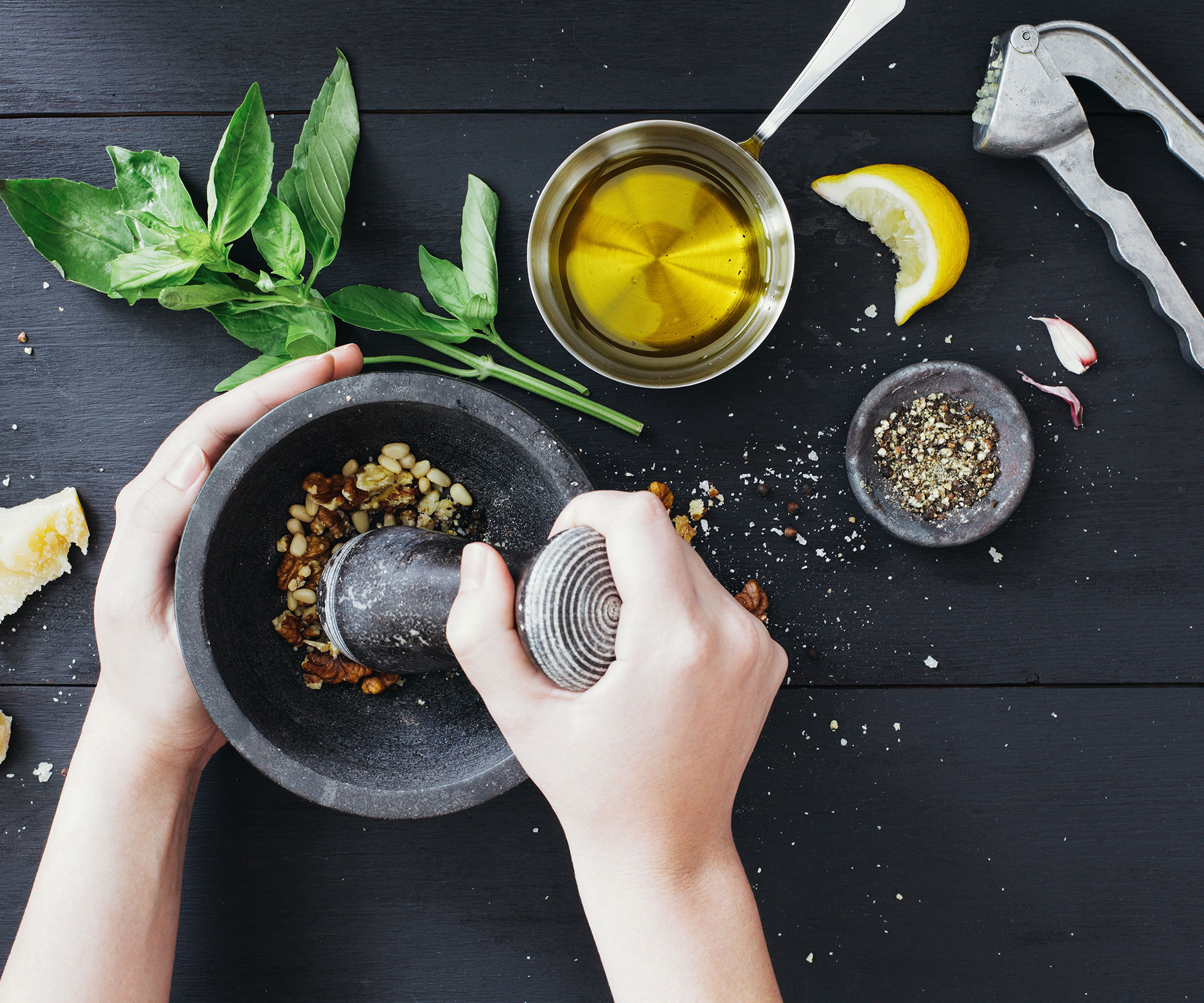In centuries past, herbs and spices were used for both cooking and medicinal purposes. But only recently has mainstream science begun to investigate their possible health benefits, in particular the potential of high levels of polyphenol compounds, which are found in these punchy little ingredients and other plant-derived foods such as broccoli, dark chocolate, berries, grapes and onions.
Plants produce polyphenol molecules for various reasons, including protecting themselves from insects, disease and sunlight. Polyphenols have well-known antioxidant properties, but less known is that they have anti-inflammatory, anti-cancer and neuroprotective effects. So they may protect our health by reducing the risk of non-communicable diseases such as cancer, cardiovascular disease and diabetes. They may also exert antimicrobial, antidiabetic and anti-asthma effects and positively promote the development of healthy gut microflora.
This all sounds delightfully positive, but even if herbs and spices are rich in health-promoting polyphenols, the question remains: can the minute quantities we typically consume make any difference?
For starters, cooking can change the polyphenol content of herbs and spices. Microwaving, simmering and stewing typically increase the antioxidant capacity, but baking, grilling or frying decrease it. Once the food is cooked and eaten, only about 10% of the bioactive polyphenols in herbs and spices make it across our gut lining and into our circulation, according to a 2014 review in the International Journal of Molecular Sciences. Whether the small proportion of absorbed bioactive polyphenols benefits our health remains to be determined.
What we do know is that herbs and spices have a direct and measurable effect in enhancing taste. Salt (sodium chloride) is an important component of many foods. In low concentrations, it can suppress bitterness and increase sweetness and it enhances the taste of other flavour compounds. Salt is also used for texture and preservation in foods.
However, dietary salt intakes in most Western countries are much higher than required and scientific evidence links this to hypertension (high blood pressure). Manufacturers and home cooks love salt, but salt doesn’t love us back.
So herbs and spices can be beneficial for health when used in place of salt in the flavouring of food.
Herbs and spices were used successfully in a large-scale randomised trial in the US to reduce the sodium intake of adults. In the first phase of the trial, in which all food and drinks were provided, 55 adults consumed a low-sodium diet for four weeks; in the second phase, 40 participants were randomly assigned to receive either standard dietary advice to reduce sodium intake or a behavioural intervention that involved education in the use of herbs and spices instead of salt to flavour food.
At the end of the 20-week second phase, the participants using herbs and spices were consuming on average 1000mg less sodium a day than the other group – a significant step towards meeting the American Heart Association’s recommended 1500mg a day or less.
Herbs and spices were also used in another clinical trial to flavour reduced-fat foods. Almost 150 participants sampled three sets of meals – full-fat (FF), reduced-fat with no added herbs and spices (RF) and reduced-fat with herbs and spices (RFS). The RF meals – meatloaf, a vegetable side dish and a pasta side dish – received a significantly lower overall approval rating than the FF versions.
However, participants enjoyed the meatloaf and vegetables flavoured with herbs and spices as much as the full-fat versions, and the RFS pasta dish was much more popular than the RF, though not quite as popular as the full-fat version.
Whether the antioxidants in herbs and spices benefit our health remains to be seen. The good news is these flavour-packed beauties can significantly enhance the taste of lower-fat and lower-sodium meals, thus indirectly helping us towards enjoying a healthier overall diet.
Words by: Jennifer Bowden
Photo: Getty Images


.jpg)